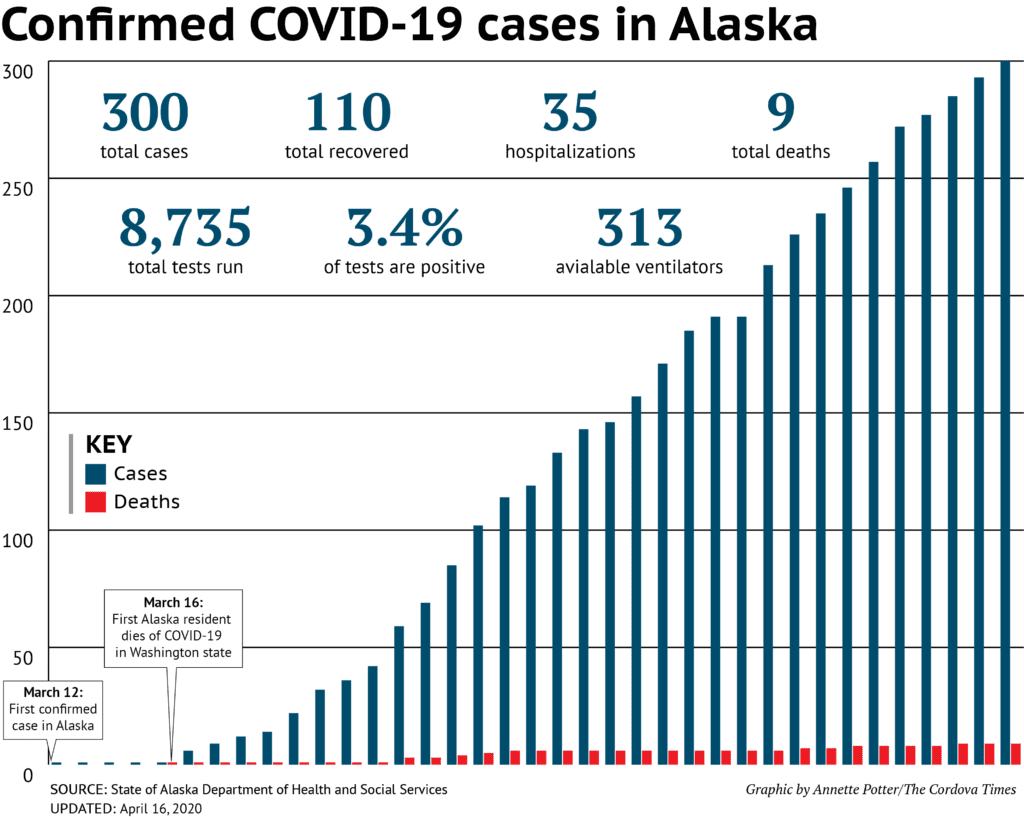As the number of Alaskans infected by the novel coronavirus has grown, so too has the number of people recovering from COVID-19.
On Thursday, April 16, the Alaska Department of Health and Social Services noted the addition of seven new cases for the 24-hour period ending midnight on Wednesday, April 15, including the first case in Kodiak, two in Juneau and four in Anchorage. Eight new cases reported for the previous 24-hour period, included the first case in Nome.
Those numbers put the statewide number of infections at 300, while the number of those recovered grew to 110 individuals. A total of 35 of those infected were hospitalized and nine of the patients had died, with two of the deaths occurring out of state.

According to Dr. Anne Zink, the state’s chief medical officer 8,735 Alaskans, or about 1 percent of the population, have now been tested, with the number of those infected at 3.4 percent.
Anchorage leads the state in infected people, with 143, followed by Fairbanks-North Star Borough with 79, and Juneau with 23. Sixteen residents of the Kenai Peninsula Borough and 15 residents of the Ketchikan Gateway Borough also are infected. The rest of those diagnosed with COVID-19 were in the Kodiak, Nome, Bethel, Yukon-Koyukuk, Southeast Fairbanks and Prince of Wales-Hyder census areas, as well as the Petersburg Borough.
Gov. Mike Dunleavy spoke again at a statewide media teleconference about starting to open Alaska back up for business, starting with specific services offered by healthcare providers, including non-urgent elective medical procedures. The state initially halted these procedures as officials worked to build up reserves of medical equipment, including personal protective gear.
The decision to start with medical services was based on health care and economic concerns. State officials are also looking into reopening the retail sector and are working with the fishing industry to assure that commercial fisheries operate in a way that is safe for their workers and communities too.
Reopening the economy will be done with extreme caution, Dunleavy said.
“If we opened everything up and went back to normal, the chances are probably excellent that our cases would grow,” Dunleavy said. “And if we kept it open even with our cases growing – you could potentially have a situation like New York.”
Instead Dunleavy’s goal is a slow return to normal, which will include schools.
“Early identification of cases, aggressive contact investigations, isolating sick people, quarantining those who were around can make a difference in stopped an outbreak,” said Dr. Anne Zink, the state’s chief medical officer. “The sooner we can learn to kind of swim in this new water rather than just kind of holding on to the edge of the past, the stronger and more resilient we’ve be.”





